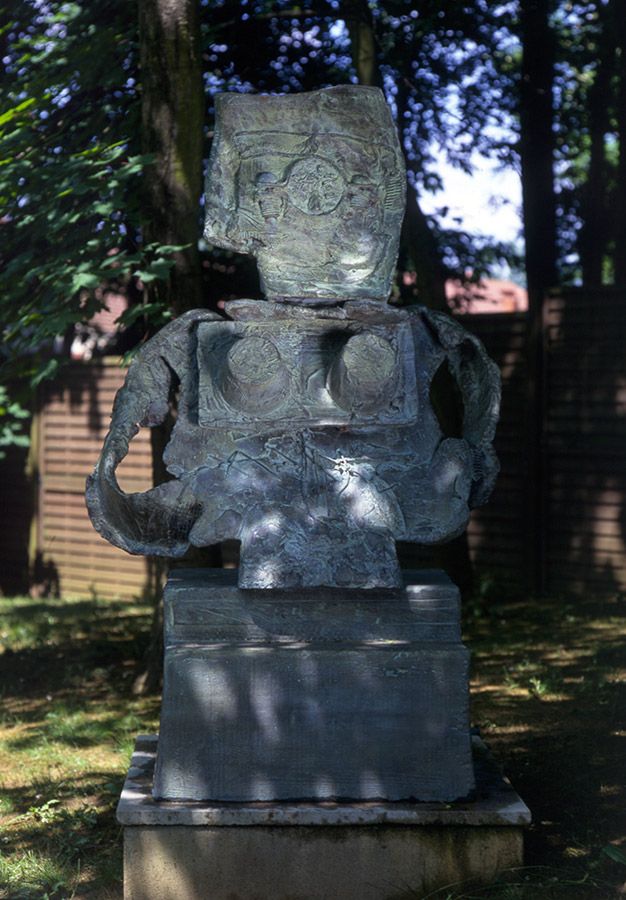Antoni Clavé


Selected Works

Antoni Clavé
Roi au fond bleu, 1959
huile sur toile
116 x 89 cm
Signée et datée en bas à droite

Antoni Clavé
La Nourrice aux lacets,1962
Bronze
Height: 180 cm
Some of the works depicted are no longer available.
Biography
Antoni Clavé is an avant-garde artist from Barcelona who experiments with collages of various materials, ropes, printed fabrics, corrugated cardboard, newspaper. His posters and crumpled papers are trompe l'oeil
Antoni Clavé (1913) was born in Barcelona. At the age of 13, he had to work and was hired in a fabric house for girdles and corsets. At the same time, he enrolled in evening classes at the Escuela de Artes y Officios Artisticos y Bellas Artes in Barcelona. Then he became an apprentice painter in the building trade, he was attracted by the manual side of the trade (whitewash, coatings, glues, and later preparation of colors). Clavé learned to handle brushes, to draw, the letter, the imitation wood. In 1932, he won second prize in a poster competition, and was hired by the company Cinematografica Nacional Española to make film posters on the facades of three cinemas in Barcelona. Clavé made a living from advertising and decorative work in which he used avant-garde experiments: collages of various materials, ropes, printed fabrics, corrugated cardboard, newspaper. In 1936, he created posters to galvanize the fighters of the Spanish Civil War. He fled the war and ended up in France in 1939, in Perpignan, where he was exhibited. Arriving in Paris, he met Picasso. He participated in a series of group exhibitions in Paris, in the provinces and abroad and created costumes and sets for ballets.
Recognition came in 1955 from the monographic exhibition in London offered to him by the Arthus Tooth & Sons gallery. Antoni Clavé received the UNESCO Prize for Engraving at the 28th Venice Biennale in 1956 and the Sala Gaspar in Barcelona exhibited his paintings for the first time. The following year, he created his first paintings on carpets. This was followed by an exhibition in major galleries in Basel, Bilbao and Los Angeles. He represented France at the 4th Sao Paulo Biennale where he received the Matarazzo Prize for Painting. The Creuzevault Gallery organized its first major exhibition in Paris in 1958. He had a series of exhibitions in galleries and museums around the world. While his creation continued to evolve. He invented trompe l'oeil crumpled papers. He participated for the first time in the FIAC in 1982 with the Sala Gaspar gallery. In 1990, the monumental sculpture commissioned by Barcelona to commemorate the Universal Exhibition of 1888 was installed in the park of the Citadel of Barcelona.
